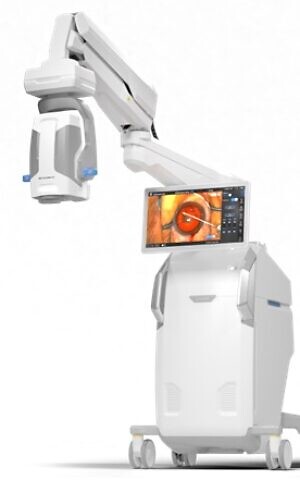Israeli innovators have turned the technology into an augmented reality headset for fighter pilots to aid eye surgeons.
After receiving the CE mark in the fall, the Beyonics One is now being rolled out in Europe.
In the US, where it has been used for 2,000 surgeries in the research stages, it has been approved by the Food and Drug Administration.
Technology was recently the subject of peer reviewed research, which found that it performed well when first applied for endothelial keratoplasty, a complex procedure to remove abnormal material from the cornea.
Bionics One is an adaptation of the head-mounted display that pilots have used for decades, and which have now become more sophisticated. Ron Schneider used to work on such displays at the Israeli defense company Elbit and founded Beyoncé to spin the tech, which he now leads as CEO.
“The standard equipment today is the old-fashioned surgical microscope,” Schneider told The Times of Israel. “But advanced visualization headsets do exist for flight, and the idea here is to harness this power for surgery.”

Photo: Doctors performing eye surgery. (Nakornkhai via iStock by Getty Images)
When surgeons put on the Bionics One headset, they see highly magnified images of the eye, as well as important patient information from pre-surgery tests and examinations. For sanity, they don’t need to touch the keypad, but instead need to control their view using head gestures.
A senior doctor using the device, Prof. Paulo Eduardo Stanga, vitreoretinal surgeon and director of The Retina Clinic in London, said that working with it “felt like being inside the eye during surgery.”
Schneider said the aim was to give surgeons a clearer view and more data so they can operate more precisely. He gave the example of cataract surgery, in which a cloudy lens is removed and a clear lens is inserted.

The Bionics One platform, with the headset hanging from a long arm. (courtesy Bionics)
“It needs to be done very precisely, and today it’s mostly done by marking the eye with ink and then aligning the new lens,” said Schneider. “This technology provides guidance with extremely high precision.”
The Bionix One wasn’t the only smart headset available, but Schneider said it was notable for its very sharp picture and the high level of surgical data it provided alongside the images surgeons could see.
Recent research on the device, published by scholars from Tel Aviv Medical Center and Tel Aviv University, states that the procedures for which they used the device were successful and there were no postoperative complications.
“Surgeons reported excellent visibility and minimal [time] Lag, almost negligible, with the benefits of improved ergonomics and the use of head gestures to control zoom, focus, brightness and panning,” it said.
Schneider said the headset would evolve through a series of software applications with different functions, for example, applications that alert doctors about various risks during surgery based on the images it is processing. .
“It is appropriate to compare this technology to the iPhone, in the sense that it is a very robust hardware platform for which it is possible to develop many applications,” he said. “And now we’re developing a number of apps, software clinical applications on top of that, which is exciting.”
